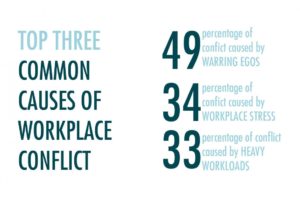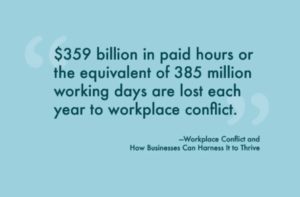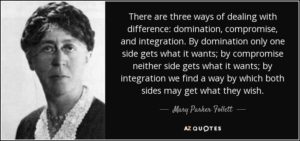
How to resolve conflicts between employees?

Conflicts between employees will create friction in the interpersonal relationship. Conflicts between employees will lead to a loss in productivity and the spread of negativity in the employee zone.

When you have a group of people together day after day, conflict is inevitable. The employees you so carefully screened during interviews aren’t immune, either. They might have had the right answers to behavioural questions such as, “How do you manage conflict?” Unfortunately, polished interview responses don’t secure a harmonious workplace.
Workplace conflict can occur in different ways: between two employees, among whole teams or between managers and the team members they manage. The issue might seem difficult in the first place, but resolving them is possible.
However, it’s time to resolve the conflict effectively so that you can refocus on growing your business. We know it sounds overwhelming because it seems to be outside of the business scope to deal with people fighting. But, the truth is that acquiring conflict management skills and strategies to be applied in the workplace. It is an indicator of a great business leader. When there are a large number of people from different backgrounds, disputes and quarrels will arise, and you better be prepared.
Don’t worry. We are here for you!
We have gathered tested methods and designed a course of action with simple steps to show you how to handle conflict in the workplace.
Let’s dig in.

How to handle conflicts between employees?

- Embrace conflict.
When a conflict arises, don’t avoid it or pretend nothing has occurred. As time goes on, tension will mount, and the battle only will get worse. Deal with these uncomfortable matters as soon as possible, before more problems, and bad feelings become embedded in daily work.
The time you notice a conflict between team members, encourage them to find a way to work it out. In case a dispute develops between two teams, it’s an excellent time to improve interdepartmental communication. If you have a fight with one of your employee, address it head-on and in private.
- Talk together.
Set up a time and place so that you can talk for an extended span without outside interruptions.
When you meet, each person should have adequate time to say what he or she believes the other party needs to heed. Don’t let any individual monopolize the discussion or control the topic. Each person should talk only about the differences and how he or she feels about the issue.
Remember, it is not the time to attack or assign blame. So, focus on the problem, not your opinion of the other person’s character.
- Listen carefully.
It’s essential to give your undivided attention to the person who is talking. Do not interrupt the other person.
Make sure you are getting the message he or she intends to send. Rephrase and repeat back what you have heard to confirm understanding.
Ask clarifying questions if needed. You can also request the other person to repeat a central idea or reword his stress in a way that makes sense.
Listening should be about gaining understanding. Don’t permit yourself to become reactionary to the other person’s words.
- Find agreement.
Your discussion mainly will centre on the differences, but the resolution is possible only when you locate points of agreement. You need to emerge from the experience with some positives rather than all negatives.
Shed light on commonalities. Share examples of situations in which you agree with the other person or can see any other point of view. For example, if you don’t agree on new sales tactics, you might share what you liked about the other person’s idea. You can also motivate the team to work harder.
Looking for agreement exhibit your willingness to seek out common ground and build a relationship around those trust elements.
- Provide guidance.
If you are in a leadership position, there are times you may need to mediate work disputes. Don’t take sides, ever. Realize you are there to help your employees work out their problems.
You might need to guide the conversation. And if hurt feelings run high, you’ll likely need to redirect the topic, so your employees return to the real problem. If you’re in a position to advise on next steps, highlight the positive features of the process. You can also suggest them related topics or actions they can work through after the meeting.
- Be quick to forgive.
Every conflict needs a fair resolution that acknowledges hurt feelings and finds a solution that mends them.
Apologize. Tell the other person you are truly sorry for any wrong words or actions from your side. You will also need to forgive the other person. Agreeing only for the sake of appearances can lead to grudges that deepen over time, undoing any progress you’ve made together.
The truth is that, at last, we all want to be happy and productive. Another truth is that the majority of us do not want to deal with confrontation, especially at work. It is not a task to avoid, though. When handling employee conflict, remember that everybody responds better to understanding than to criticism and judgment. With that in mind, next time, your employees start fighting, just listen, understand, change, and move on. Create a culture of understanding in your firm, and you may witness productivity miracles!




